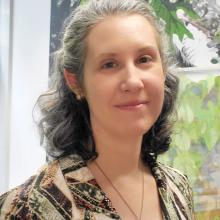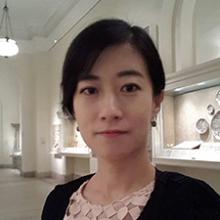- Yi-bang Li2024-2026
Yi-bang Li received his Ph.D. from McGill University in 2024. His research focuses on the materiality and formats of middle-period Chinese paintings and their interactions with the intended viewers. His dissertation, Between Surface and Space: Painted Walls in Middle-period China (8th to 12th Century), explores the relationship between the spatiality and pictorial designs of middle-period murals, as well as how both aspects shaped architectural space and the perceptual experience of their intended viewers. He is working on an article about the Buddhist murals in the Mañjuśrī Hall of the Yanshan Monastery and a book project on the Chinese tomb murals of the 8th-14th centuries.
 Cathy Zhu2022-2024
Cathy Zhu2022-2024Catherine received her Ph.D. from Columbia University in 2022. She researches Chinese painting of the Song and Yuan dynasties (960-1368) and the relationship between art, imperial power, and the creation of social and political identities. Her dissertation studies images of omens in the founding of the Southern Song and their role in crafting a sense of nationhood. She is particularly interested in the viewing practices and iconicity of images, and how such their material and functional aspects concretize notions of imperial power and cultural reach.
 Nina Horisaki-Christens2021-2023
Nina Horisaki-Christens2021-2023Nina Horisaki-Christens received her Ph.D. from the Department of Art History and Archaeology and the Institute for Comparative Literature in Society at Columbia University in 2021. Her research focuses on the intersection of art, media, urbanism, translation, and social engagement in Japan, Asia, and the Asian diaspora. Horisaki-Christens' dissertation, "VIDEO HIROBA: Contingent Publics and Video Communication in Japan, 1966-1981," took up the birth of the term bideo (video) in Japanese art discourse of the early 1970s through the work of the Tokyo-based collective Video Hiroba. Using the lens of critical translation theory, the project examined how a rejection of "expression" in favor of "communication" evoked new images of community, positioning Video Hiroba at the intersection of local and transnational discussions of video's possibilities for addressing intersecting crises in urban, media, environmental, and art institutional landscapes.




